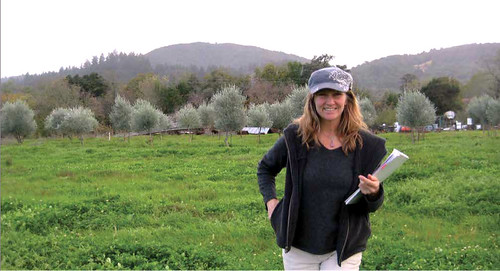
This is the fifteenth installment of the Organic 101 series that explores different aspects of the USDA organic regulations.
USDA certified organic products are produced and sold around the world, many originating from over 17,700 organic operations right here in the United States. The USDA organic label assures consumers that products have been produced through approved methods and that prohibited substances, like synthetic pesticides, have not been used. I am often asked how the USDA verifies organic claims, and whether organic operations are inspected.
In order to sell, label, or represent products as organic in the United States, operations must be certified. The National Organic Program, part of USDA’s Agricultural Marketing Service, accredits private, foreign, and State entities called certifying agents to certify and inspect organic operations.
So how does this all work? First, the operation would apply for certification through a certifying agent. The certifier will ask for information including a history of substances applied to land during the previous three years, and an Organic System Plan describing the practices and substances to be used. The certifier reviews applications to verify that practices comply with USDA organic regulations, and then an inspector conducts an on-site inspection.
Every organic operation must be inspected each year. The inspector verifies that the operation’s plan accurately reflects the operation and that the farmer is following the plan. Organic inspectors are trained to look critically at all aspects of an operation.
When first arriving at an organic operation, the inspector is looking for things like buffer zones from neighboring farms to ensure that the organic integrity of crops is maintained. The inspector then visits the fields and asked questions about pest management, soil fertility, and other factors. They also look at storage and preparation areas to make sure everything meets the organic requirements.
One of the most important responsibilities of the inspector is to examine records that document farming practices. Specifically, the inspector will audit invoices, records of material applications, organic sales, harvest, and yield. The inspector can explain the organic regulations but is not allowed to provide advice on how to farm or how to overcome identified barriers to certification. This separation between the farmer and the certifier maintains the “independent third party” nature of the transaction.
During the visit, the inspector may also collect samples for residue testing. Certifying agents use test results to identify and address instances in which organic products may have unintentionally come in contact with prohibited substances and to detect and deter fraud.
At the conclusion of the inspection, there is an exit interview where the inspector reviews any areas of concern. The inspector submits the inspection report to the certifier and it is reviewed alongside the Organic Systems Plan. As long as there are no issues and the operation is in compliance with the organic regulations, an organic certificate is issued by the certifying agent.
Every organic farm, packing facility, processor, and distributor involved between the farm and market is inspected to verify compliance with the USDA organic regulations. Every organic operation is required to renew its certification each year. During the renewal process, the certified organic operation provides an annual update to the certifier, the inspector conducts an annual on-site inspection, and the certifier reviews the application and the inspector’s report to determine if the applicant still complies with the USDA organic regulations. This process continues as long as the operation is certified.
With over 30,000 on-site inspections per year by certifying agents to monitor compliance with USDA organic standards, consumers purchasing products with the USDA organic label can rest assured that the product has maintained its organic integrity – from farm to table.



